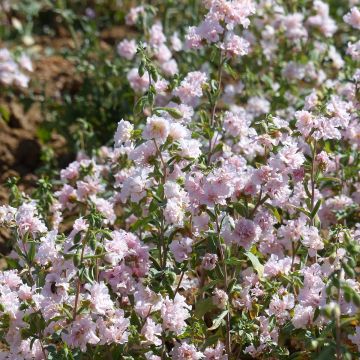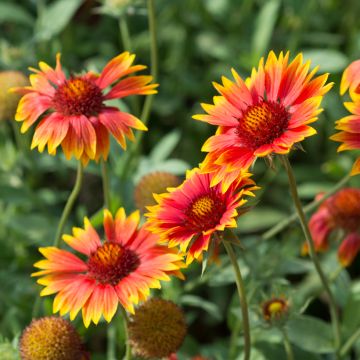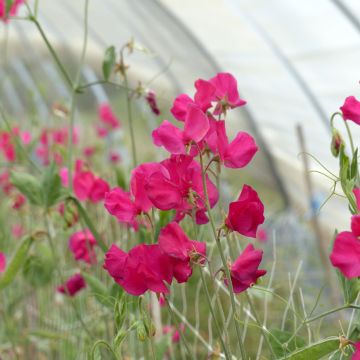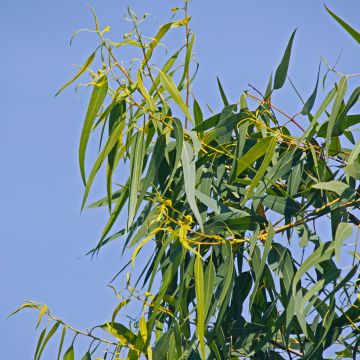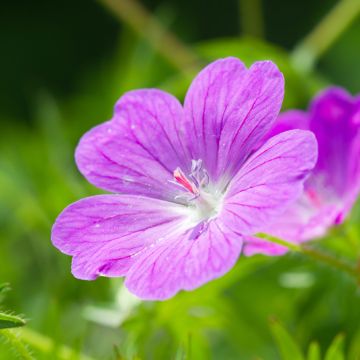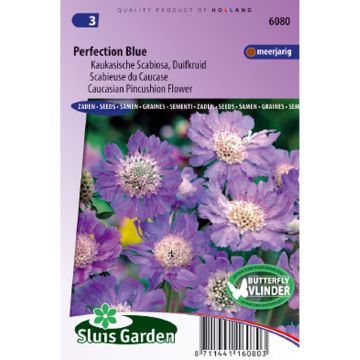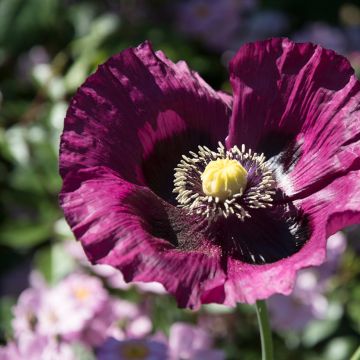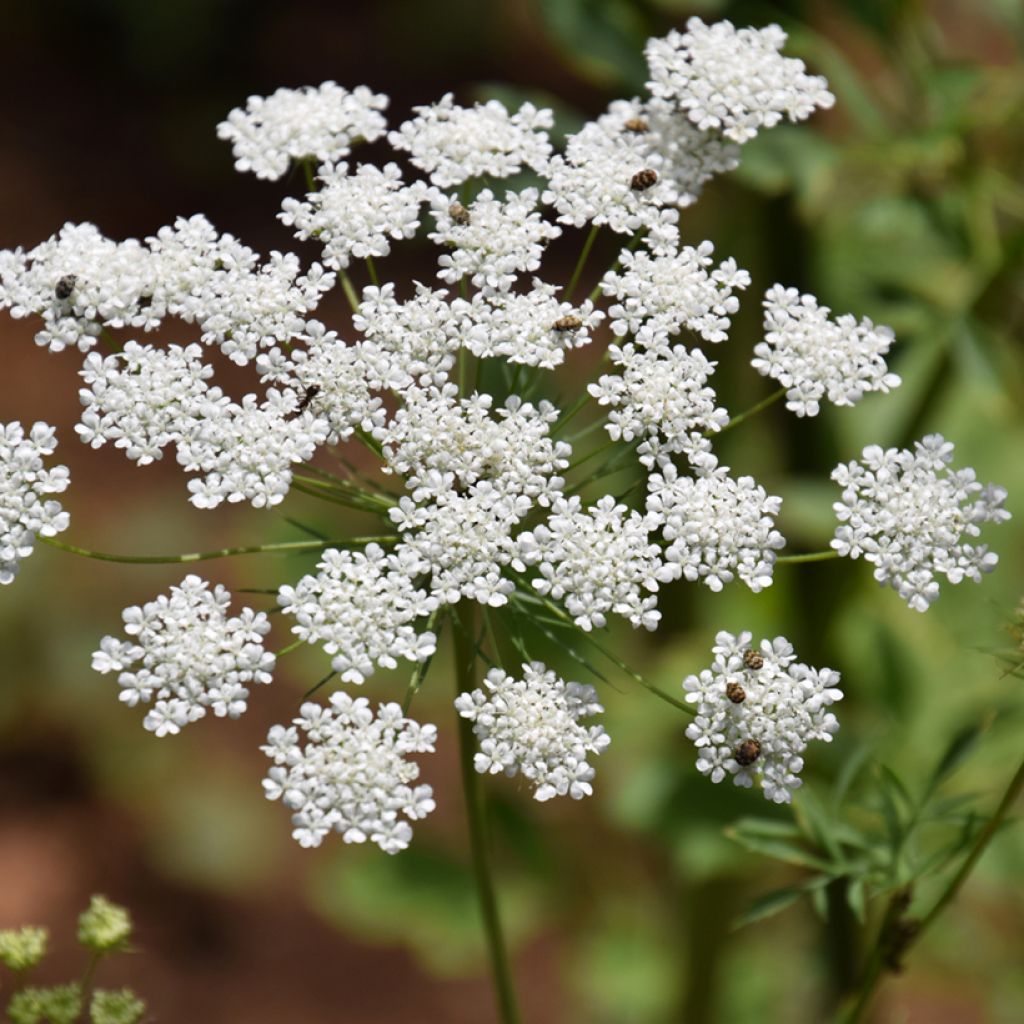

Ammi majus Queen of Africa Seeds - Bishops Flower
Ammi majus Queen of Africa Seeds - Bishops Flower
Ammi majus Queen of Africa
Sown in autumn (winter is mild here), they started blooming in early May. They seem to be suffering from chlorosis (discolored leaves) and we have lost a fairly large number of them, but the survivors reach a height of 120 cm (47in), well beyond the 95 cm (37in) you indicate. They remarkably withstand the wind despite their habit. Excellent cut flower.
Diego, 15/05/2023
This item cannot be shipped to the selected country
Dispatch by letter from €3.90
More information
Schedule delivery date,
and select date in basket
This plant carries a 6 months recovery warranty
More information
We guarantee the quality of our plants for a full growing cycle, and will replace at our expense any plant that fails to recover under normal climatic and planting conditions.
Seed-only orders are dispatched by sealed envelope. The delivery charge for seed-only orders is €3.90.

Does this plant fit my garden?
Set up your Plantfit profile →
Description
Ammi majus 'Queen of Africa' is a large summer-flowering annual that forms tall, erect stems topped with large white, lacy umbels. With its delicate, cloudy blooms and feathery green foliage this elegant variety is ideal for cutting or filling out informal, wildlife-friendly flower beds and borders. Easy to grow and drought-resistant.
Ammi majus, commonly known as Bishop's Flower, is a herbaceous annual that belongs to the Umbelliferae or Apiaceae family, along with carrots and celery. It is native to the Western and Central Asia, Northern Africa and the Mediterranean region. 'Queen of Africa' is an improved strain that rapidly grows to a height of 1.40 m for a width of about 50 cm. It produces a thick taproot and sturdy, erect stems covered with light green feathery foliage. From July to September-October, the stems carry flat, white umbels that become concave and green at maturity. The tiny flowers are a magnet to a great many pollinating, nectar-foraging insects.
Ammi majus 'Queen of Africa' is very robust and elegant plant that is ideal for filling out perennial flower beds, borders and wilder areas of the garden. It combines well with repeat-flowering roses and summer-flowering shrubs. It is one of those plants that likes to grow alone, such as Love-in-a-mist, Cosmos, perennial flax, California poppies, lacy phacelia, sainfoin, cornflowers and many others. It is ideal to rapidly embellish a brand-new garden or to hide unsightly areas that have suffered from harsh winter frosts.
Report an error about the product description
Flowering
Foliage
Plant habit
Botanical data
Ammi
majus
Queen of Africa
Apiaceae
Cultivar or hybrid
Other Ammi seeds
Planting and care
Bishop’s Flower has a thick taproot that doesn’t like being disturbed. Direct sow from April to June in loose, well-prepared, free-draining soil in full sun to part shade. Scatter the seeds sparingly in small seed holes, 1,5 cm deep and 20 cm apart. Water regularly, especially during dry spells. Germination usually takes 7 to 21 days. Thin out and transplant the seedlings if necessary, leaving 25 cm between each plant.
Ammi majus is a sun-loving plant that prefers well-drained, light, even sandy soils. Although it will make do with poor, dry soil, plants will be larger in soil that is cool and fertile. Ammi majus self-seeds easily. Protect seeds and encourage germination by mulching the base of the plants. If may be necessary to stake the stems to prevent them from bending under the weight of the flowerheads.
Sowing period
Intended location
-
, onOrder confirmed
Reply from on Promesse de fleurs
Flower seeds
Haven't found what you were looking for?
Hardiness is the lowest winter temperature a plant can endure without suffering serious damage or even dying. However, hardiness is affected by location (a sheltered area, such as a patio), protection (winter cover) and soil type (hardiness is improved by well-drained soil).

Photo Sharing Terms & Conditions
In order to encourage gardeners to interact and share their experiences, Promesse de fleurs offers various media enabling content to be uploaded onto its Site - in particular via the ‘Photo sharing’ module.
The User agrees to refrain from:
- Posting any content that is illegal, prejudicial, insulting, racist, inciteful to hatred, revisionist, contrary to public decency, that infringes on privacy or on the privacy rights of third parties, in particular the publicity rights of persons and goods, intellectual property rights, or the right to privacy.
- Submitting content on behalf of a third party;
- Impersonate the identity of a third party and/or publish any personal information about a third party;
In general, the User undertakes to refrain from any unethical behaviour.
All Content (in particular text, comments, files, images, photos, videos, creative works, etc.), which may be subject to property or intellectual property rights, image or other private rights, shall remain the property of the User, subject to the limited rights granted by the terms of the licence granted by Promesse de fleurs as stated below. Users are at liberty to publish or not to publish such Content on the Site, notably via the ‘Photo Sharing’ facility, and accept that this Content shall be made public and freely accessible, notably on the Internet.
Users further acknowledge, undertake to have ,and guarantee that they hold all necessary rights and permissions to publish such material on the Site, in particular with regard to the legislation in force pertaining to any privacy, property, intellectual property, image, or contractual rights, or rights of any other nature. By publishing such Content on the Site, Users acknowledge accepting full liability as publishers of the Content within the meaning of the law, and grant Promesse de fleurs, free of charge, an inclusive, worldwide licence for the said Content for the entire duration of its publication, including all reproduction, representation, up/downloading, displaying, performing, transmission, and storage rights.
Users also grant permission for their name to be linked to the Content and accept that this link may not always be made available.
By engaging in posting material, Users consent to their Content becoming automatically accessible on the Internet, in particular on other sites and/or blogs and/or web pages of the Promesse de fleurs site, including in particular social pages and the Promesse de fleurs catalogue.
Users may secure the removal of entrusted content free of charge by issuing a simple request via our contact form.
The flowering period indicated on our website applies to countries and regions located in USDA zone 8 (France, the United Kingdom, Ireland, the Netherlands, etc.)
It will vary according to where you live:
- In zones 9 to 10 (Italy, Spain, Greece, etc.), flowering will occur about 2 to 4 weeks earlier.
- In zones 6 to 7 (Germany, Poland, Slovenia, and lower mountainous regions), flowering will be delayed by 2 to 3 weeks.
- In zone 5 (Central Europe, Scandinavia), blooming will be delayed by 3 to 5 weeks.
In temperate climates, pruning of spring-flowering shrubs (forsythia, spireas, etc.) should be done just after flowering.
Pruning of summer-flowering shrubs (Indian Lilac, Perovskia, etc.) can be done in winter or spring.
In cold regions as well as with frost-sensitive plants, avoid pruning too early when severe frosts may still occur.
The planting period indicated on our website applies to countries and regions located in USDA zone 8 (France, United Kingdom, Ireland, Netherlands).
It will vary according to where you live:
- In Mediterranean zones (Marseille, Madrid, Milan, etc.), autumn and winter are the best planting periods.
- In continental zones (Strasbourg, Munich, Vienna, etc.), delay planting by 2 to 3 weeks in spring and bring it forward by 2 to 4 weeks in autumn.
- In mountainous regions (the Alps, Pyrenees, Carpathians, etc.), it is best to plant in late spring (May-June) or late summer (August-September).
The harvesting period indicated on our website applies to countries and regions in USDA zone 8 (France, England, Ireland, the Netherlands).
In colder areas (Scandinavia, Poland, Austria...) fruit and vegetable harvests are likely to be delayed by 3-4 weeks.
In warmer areas (Italy, Spain, Greece, etc.), harvesting will probably take place earlier, depending on weather conditions.
The sowing periods indicated on our website apply to countries and regions within USDA Zone 8 (France, UK, Ireland, Netherlands).
In colder areas (Scandinavia, Poland, Austria...), delay any outdoor sowing by 3-4 weeks, or sow under glass.
In warmer climes (Italy, Spain, Greece, etc.), bring outdoor sowing forward by a few weeks.






































